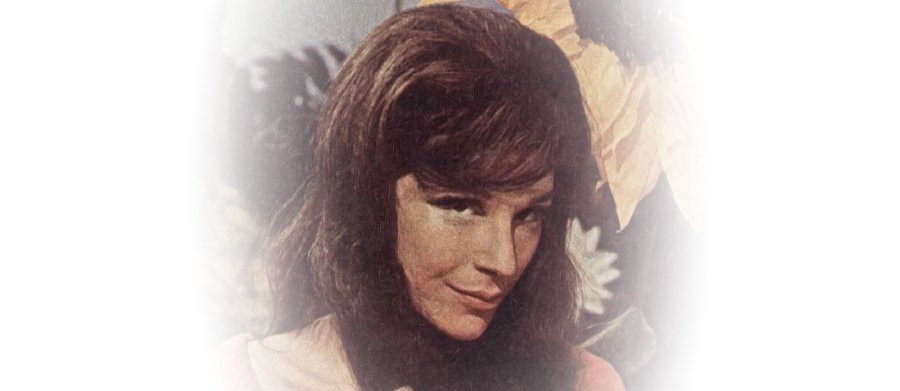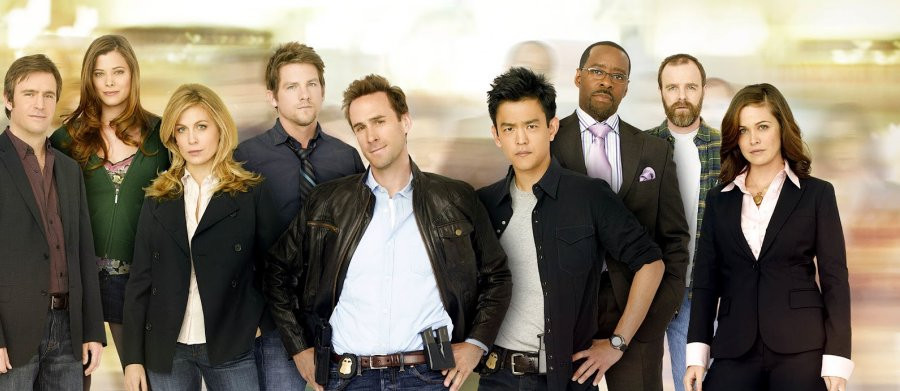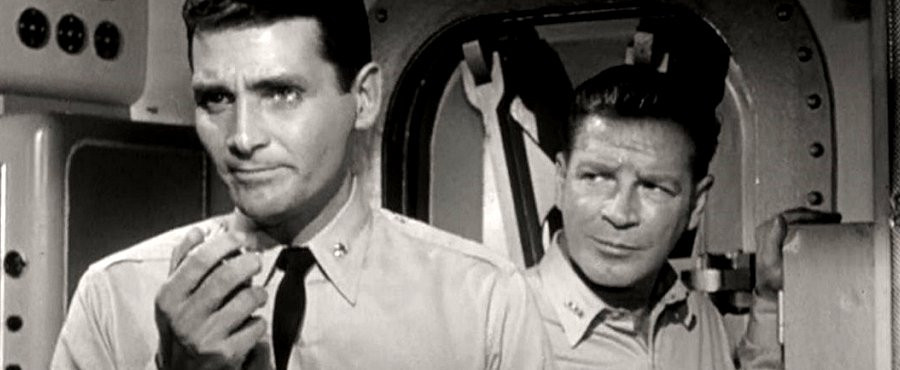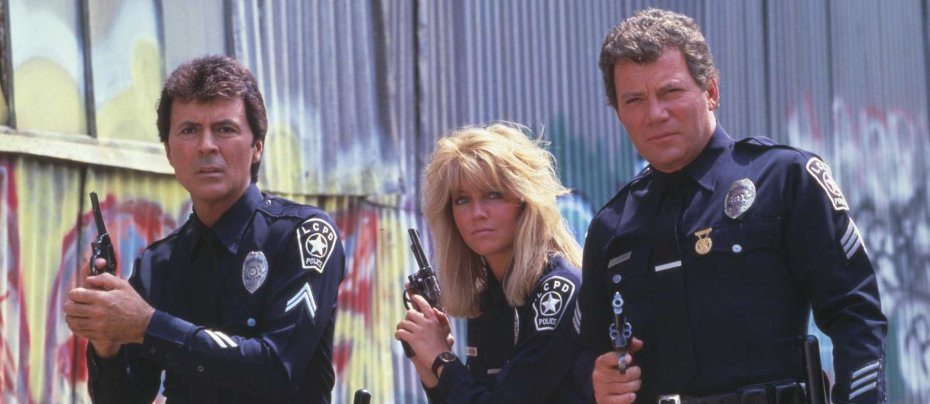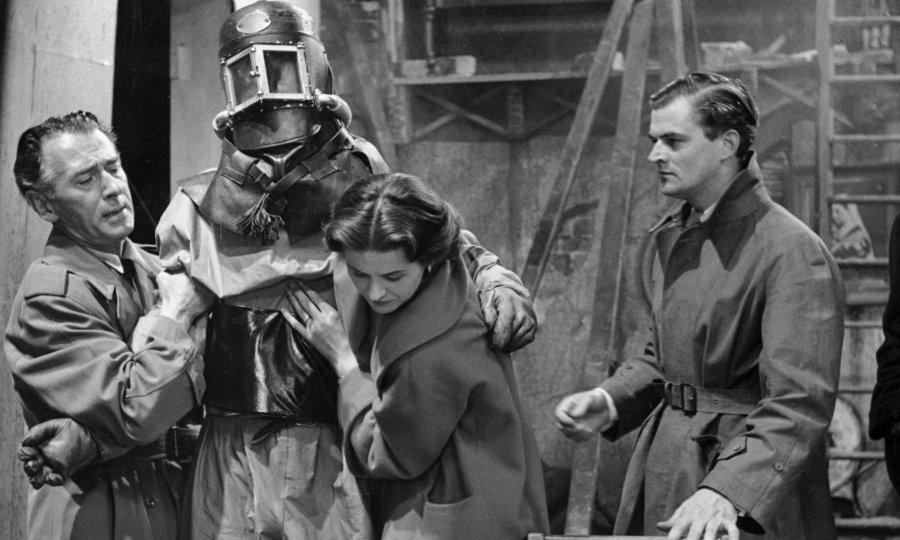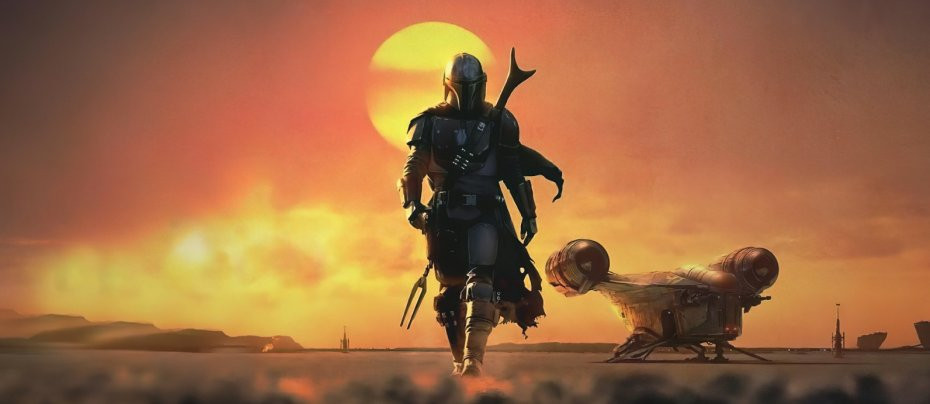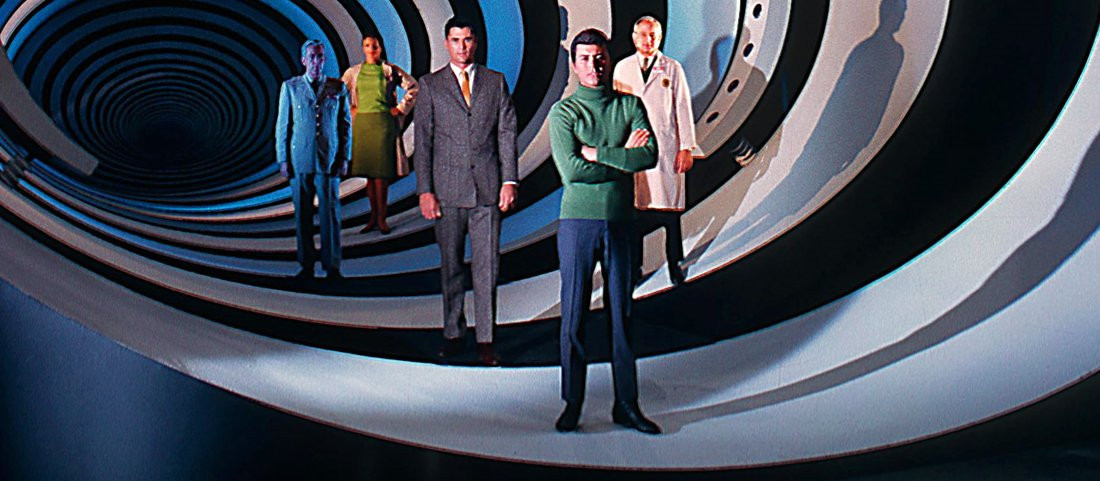
The Time Tunnel
1966 - United StatesConceived by Irwin Allen and Shimon Wincleberg, The Time Tunnel was Allen’s third production following Voyage To The Bottom Of The Sea and Lost In Space, and along with his fourth series, Land Of The Giants, it helped establish the former journalist as the foremost producer of science fiction adventure series in the USA during the 1960s. The series is now remembered as a one-season ratings failure. Nothing could be further from the truth.
Irwin Allen was born in New York on 12 June 1916 and studied journalism and advertising at Columbia University. In 1938, he joined the staff of 'Key Magazine' as editor and soon went on to produce a one-hour radio show for the station KLAC, writing producing and narrating a programme, which ran for eleven years. His success in journalism brought him an offer to write a regular Hollywood column 'Hollywood Merry-Go-Round' for the Atlas Feature Syndicate. His entry into the world of television was not far behind and with the medium still in its infancy Allen pioneered a celebrity panel show which, like his newspaper column, was also called 'Hollywood Merry-Go-Round'.
In the early 1950s Allen moved into movies producing the RKO comedy Double Dynamite starring Frank Sinatra and Groucho Marx, who remained his friend for many years after. In 1952 he won an Oscar for a documentary feature The Sea Around Us. More nature films followed under the banner of his own company, Windsor Productions. The Animal World (1956) featured prehistoric special effects by Ray Harryhausen. He also went on to produce The Story of Mankind for Warner Brothers, which he co-wrote with Charles Bennett, and which boasted an all-star cast including Ronald Coleman and Vincent Price and was also notable for being the last film in which the Marx Brothers all appeared in the same feature.
In 1960, Irwin Allen moved to Twentieth Century Fox Studios to produce the successful The Lost World with Claude Raines, Michael Rennie, and David Hedison, before producing the film version of Voyage to the Bottom of the Sea (1961) starring Walter Pidgeon, Joan Fontaine and Peter Lorre. In 1964, Allen produced a TV version of Voyage to the Bottom of the Sea with Richard Basehart and David Hedison at the helm of the atomic submarine Seaview. The following year, Allen introduced the space family Robinson to US viewers, in the classic Sci-fi series Lost In Space. It wasn’t long before the series became a huge international hit.
When The Time Tunnel was conceived in 1966, there had been precious little about the whole time travel concept on US television. Although the subject had been covered in various anthology series such as The Twilight Zone and The Outer Limits, these shows normally jumped into the future to take a look at scriptwriters’ ideas of what the world would be like in years to come, and travelling into the past to meet historical characters was normally used for comic relief. The Time Tunnel concept may well have been inspired by the prolific US sci-fi writer Murray Leinster (the nom de plume of William Fitzgerald Jenkins), who had written a novel with the same title in 1964, one of only 1,500 short stories and articles produced over the course of his career. (Leinster went on to produce a novelisation of the TV series and two novelisations of Allen's Land Of The Giants).
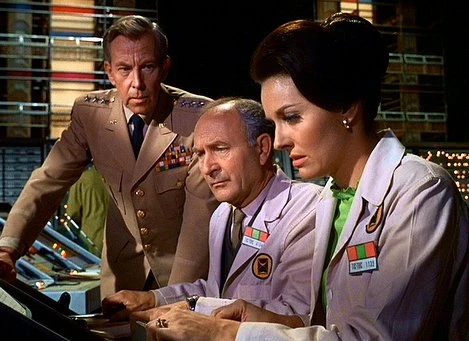
In the opening story, a top-secret U.S. government program, codename: Project Tic-Toc to build an experimental time machine known as "the Time Tunnel", is in danger of cancellation when a government official threatens to pull its funding. The reason being the costs of the project are now approaching those of the entire U.S. space program, and is showing no signs of success. In a last ditch attempt to save the project from closure, a young physicist, Dr. Tony Newman (James Darren) turns the machine on and sends himself back in time. Newman finds himself on board the Titanic, just hours before the doomed liner is set to hit the iceberg that will sink it.
Back at Project Tic Toc, the Time Tunnel team of scientists manage to get a 'fix' on Newman's position in time and can watch events unfold but are unable to interact with the physicist. Fearing for Newman's life, Dr. Doug Phillips (Robert Colbert) enters the Time Tunnel in order to warn his friend and colleague of the dangers ahead, and also to try and convince the ship’s captain to adjust his course, thereby changing history. But as all good science fiction fans know, the course of true history cannot be changed, and the two time travellers fail in their efforts to save Titanic.
As the ship is sinking, the Time Tunnel scientists find a way to pull Newman and Phillips out of the time period and back into the time vortex, but they are not able to bring them home, just deposit them in another time period. Thus was the premise for the whole series, as the two adventurers tumbled (literally) from one period in history to another, allowing episodes to be set in the past and future - but always ending in a cliffhanger as a preview of the next episode, a tried and tested format that had previously been employed successfully on Lost In Space.
It was an original premise and one that would be returned to again but with far more success in Donald Bellisario’s Quantum Leap. And although the producer of that series never actually acknowledged 'The Time Tunnel's' influence, it is hard to escape the similarities; a scientist catapulted into other time periods when his project is under threat, leaping from one era to another and hoping that his next leap will be ‘the leap home’. There was even a Doug Phillip’s type companion in the form of the holographic Al.
The Time Tunnel got off to a good start. The initial launch episode 'Rendezvous with Yesterday', was well written, boasted a good guest cast (Michael Rennie and Susan Hampshire) and set the tone for the rest of the series by utilising library footage from a number of feature films which were superbly integrated into the series to give it a big budget feel. (The series won an Emmy Award in 1967, for its Individual Achievements in Cinematography. The award went to L.B. "Bill" Abbott, for his Photographic Special Effects). Shimon Wincleberg's original script was revised by Harold Jack Bloom who made a number of minor changes such as the removal of Doug Phillips' parents from the doomed ship, which may well have stretched credibility a little too far and caused a few raised eyebrows.
The rest of the regular cast members included Dr. Ann MacGregor played by Lee Meriwether, Lt. General Heywood Kirk played by Whit Bissell, and Dr. Raymond Swain played by John Zaremba. The Time Tunnel was almost unique in the fact that the regular supporting cast almost never got to work with the two lead actors!
The Time Tunnel first aired in the USA on ABC on 9 September 1966, one day after the debut of another sci-fi show; Star Trek. It was scheduled to follow The Green Hornet on a Friday night and faced stiff opposition. The Green Hornet did it no favours by being a thirty minute show starting at the same time as other networks were beginning 60 minute offerings such as The Wild, Wild, West (on CBS) and Tarzan (on NBC). Nevertheless, Time Tunnel held its own against pretty stiff opposition such as Hogan’s Heroes and The Man From U.N.C.L.E. all competing for the same target audience. In fact, the show did suitably well to be renewed for another season and 4 of these episodes were filmed before an abrupt cancellation. And this after the cast "renewal party" had already been held.
The show was replaced by a Western series called The Legend of Custer allegedly after new management at ABC wanted to stamp their authority on the network. One executive was heard claim that "Irwin Allen's giving you phoney history lessons wrapped inside cheap sci-fi schlock. Custer was the real thing!" Far from it. The Legend of Custer became much derided by critics as well as pro Native American groups for showing a whitewashed picture of a notorious historical figure. And in any case, The Time Tunnel had already covered the subject in a much more superior story entitled 'Massacre'.
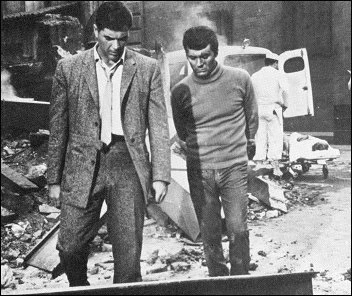
The historical episodes of The Time Tunnel worked much better than forays into the future even if artistic licence was often taken with historical facts. The Titanic episode aside one of the highlights of the series was the episode 'The Day The Sky Fell In' taking place on 6 December, 1941 and putting Tony and Doug in the Japanese Consulate in Honolulu, Hawaii, on the day before Pearl Harbour is bombed. Other adventures threw them into the French Revolution, The Alamo and the Khyber Pass just prior to the infamous 'Night of the Long Knives'.
It was popularly believed for a time that in the final scene of the final episode Tony and Doug are re-deposited on the deck of the Titanic to begin their adventures all over again. (This is reported in Fantastic Television by Gary Gerani with Paul H. Schulman published in 1977 in an otherwise excellent guide to US telefantasy shows). This is not true and has come about as a result of US TV showing a trailer for the summer re-runs in 1967. Another inaccuracy is that The Time Tunnel often used old props from Lost In Space. In fact it was Lost In Space that benefited from The Time Tunnel's props following the series cancellation.
The Time Tunnel was initially shown on BBC1 in the UK and in the early 1970s was re-shown on ITV before moving to Sky in the 1980s. It then went back to ITV for a late night slot before appearing on both Channel 4 and the satellite channel Bravo. It also has the distinction of winning a viewer’s choice poll beating a double-bill of Batman and The Monkees on TVS. The series was re-shown on American television in the early-mid 1990s. In 2002 Fox showed interest in remaking this series and went so far as making a pilot episode, in which a government team goes back in time through a time tunnel to World War II in order to retrieve a medieval monk misplaced by a time storm. However, this was later turned down due to similarities to Stargate SG-1.
The first 15 episodes were released on DVD in North America on January 24, 2006. The second volume, containing the final fifteen episodes, was released June 6, 2006. This includes interviews with the stars of the original series and includes the unaired 2002 pilot as a special feature.
SciFi (US cable channel), announced on 6 April 2006, that it was going to create a new pilot for its 2006/07 season. Two of the producers of the Fox project, Kevin Burns and Jon Jashni, were executive producing Sci Fi's pilot along with Irwin Allen's wife, Sheila. John Turman ("Hulk") was reportedly writing the script. However, nothing has seen the light of day since and The Time Tunnel doesn’t look as though it will be reactivated soon.
Seen this show? How do you rate it?
Seen this show? How do you rate it?
Published on February 7th, 2019. Written by Marc Saul (2006) for Television Heaven.


